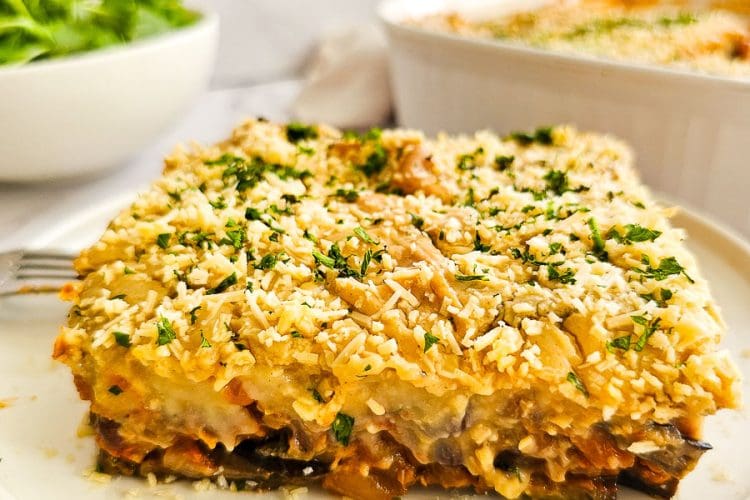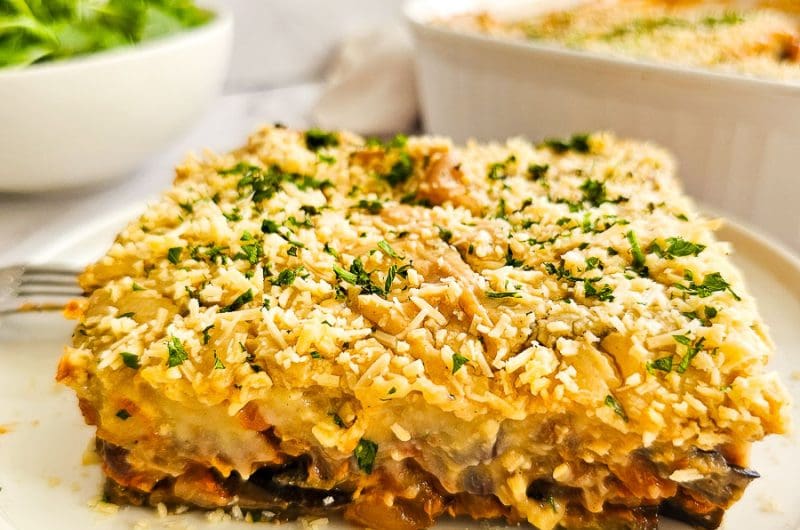If you love Moussaka, then you will love this plant-based version. This Vegan Moussaka features layers of thinly sliced potato, eggplant, zucchini, and a tasty lentil sauce, topped with a creamy vegan béchamel sauce. It offers a rich combination of textures and flavours, making it a delicious and comforting plant-based alternative to traditional Moussaka.
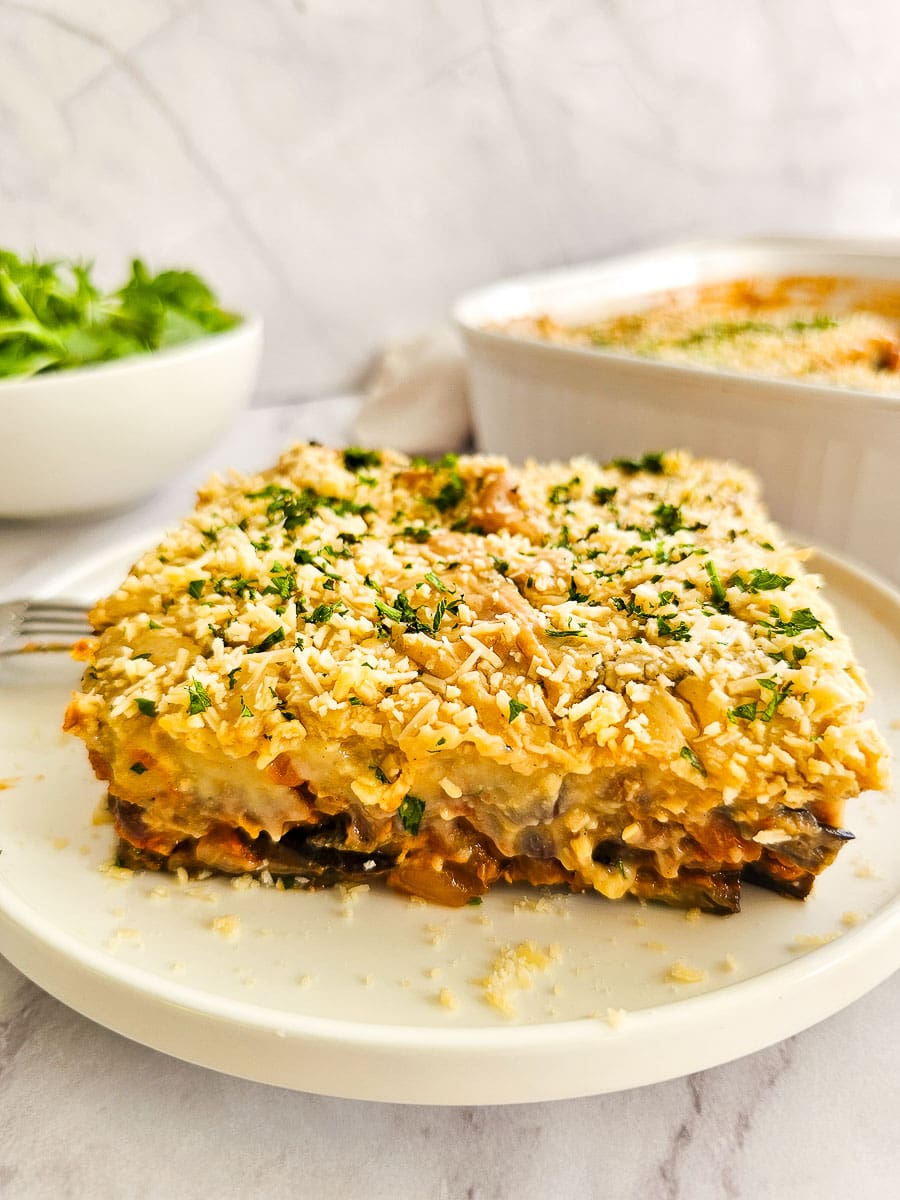
I first made this dish when we invited a friend who is vegan, for dinner. I was excited to cook for him, knowing that many Greek recipes are vegan-friendly due to the frequent fasting days where we avoid animal products. I used my mum’s traditional Moussaka recipe as a base but adapted the minced meat filling and béchamel sauce to be vegan. Over the years, I’ve experimented with various meat-free fillings, but my favourite is a combination of lentils and black beans, inspired by the food blogger FoodByMaria. The flavours are so spot-on to the traditional Moussaka, that when enjoying this vegan version, you might even mistake it for the meat-filled Moussaka.
How to make Vegan Moussaka
Don’t be alarmed by the long list of ingredients and steps. I simply divide this recipe into three parts:
- Slicing and cooking the vegetables
- Preparing the lentil sauce, and
- Preparing the bechamel sauce.
While it’s not a quick 20-minute meal, and I must confess, there are a few saucepans to clean up, the effort is undoubtedly worthwhile!
Ingredients for the vegetable layer
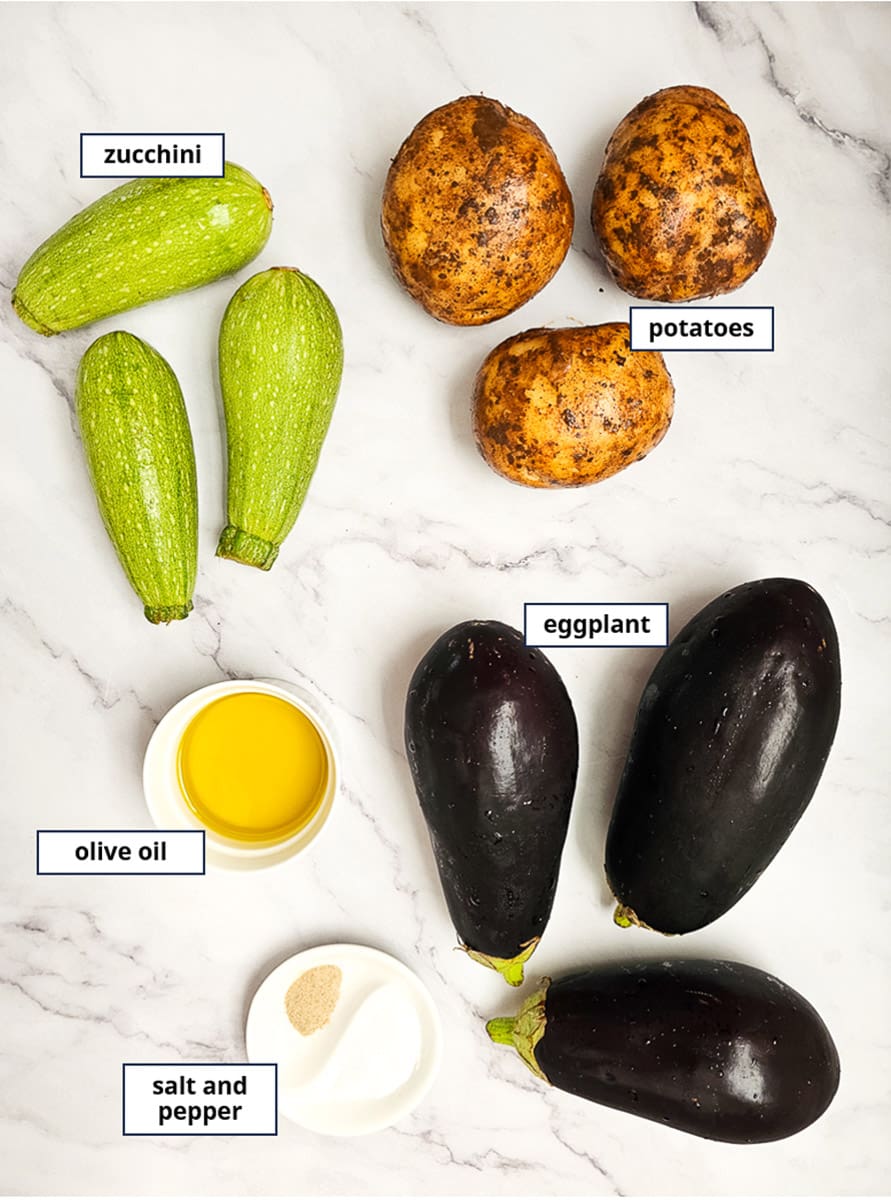
Eggplant: Look for shiny, smooth eggplants with a green stem, as well as firm, heavy eggplants, as this indicates freshness and the eggplants are less likely to have seeds. The seeds in the eggplant are what cause them to have a bitter taste. Choose medium to small eggplants rather than the extra-large ones, as larger eggplants tend to have more seeds. I always salt my eggplant before cooking.
Zucchini: Traditionally, Moussaka is only made with eggplant, and I do this for my meat-based Moussaka. However, adding zucchini to this Vegan Moussaka adds a nice balance of sweetness. You can use either light or dark green zucchinis but if you can, choose light green zucchinis, also known as ‘white zucchinis’, as they tend to have a milder, sweeter flavour, and a softer and more tender texture, compared to dark green zucchinis.
Potatoes: Thinly sliced potatoes not only provide a hearty base but also contribute to the layers of flavour and texture in the Moussaka.
How to prepare the vegetables for the Vegan Moussaka
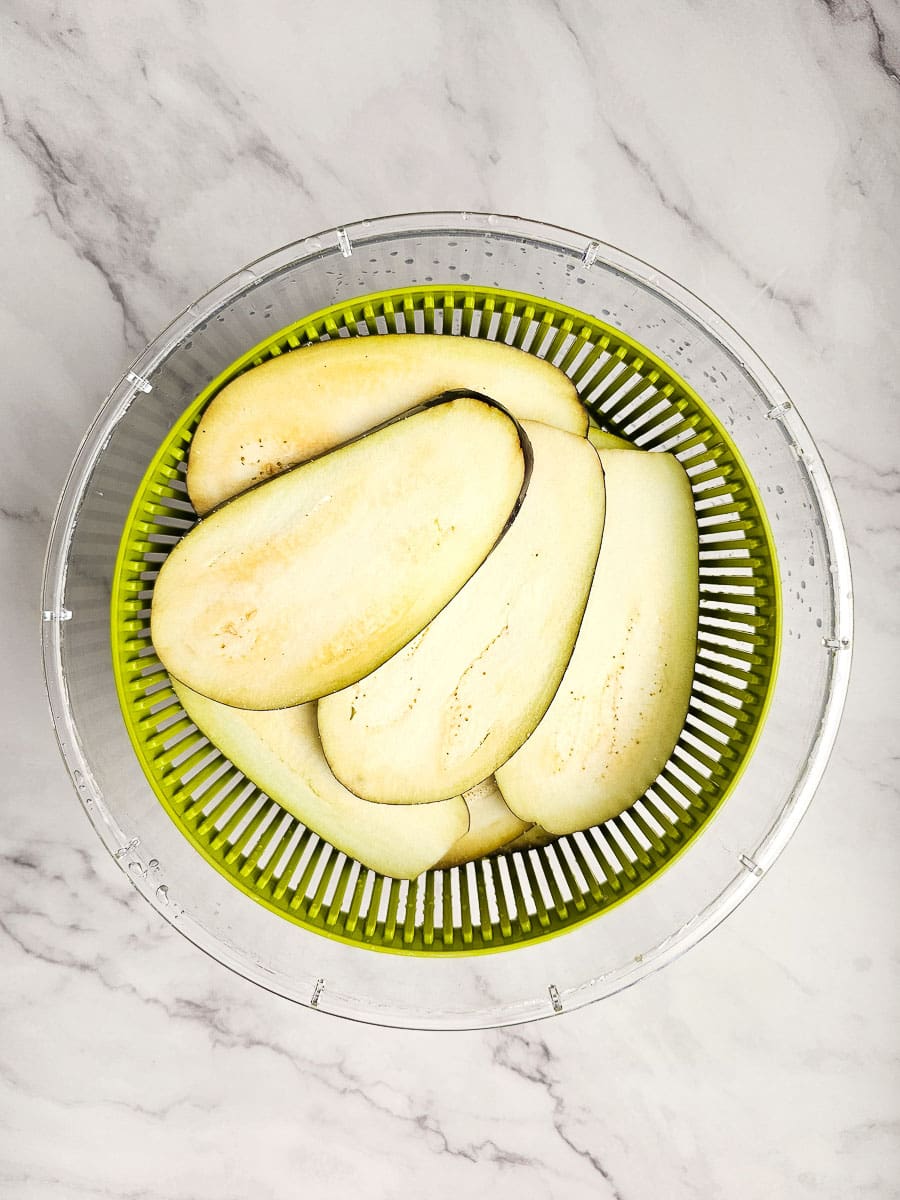
1. Slice eggplants lengthways and sprinkle generously with salt. Let them sweat for about 30 minutes. Rinse and pat dry with a clean tea-towel.
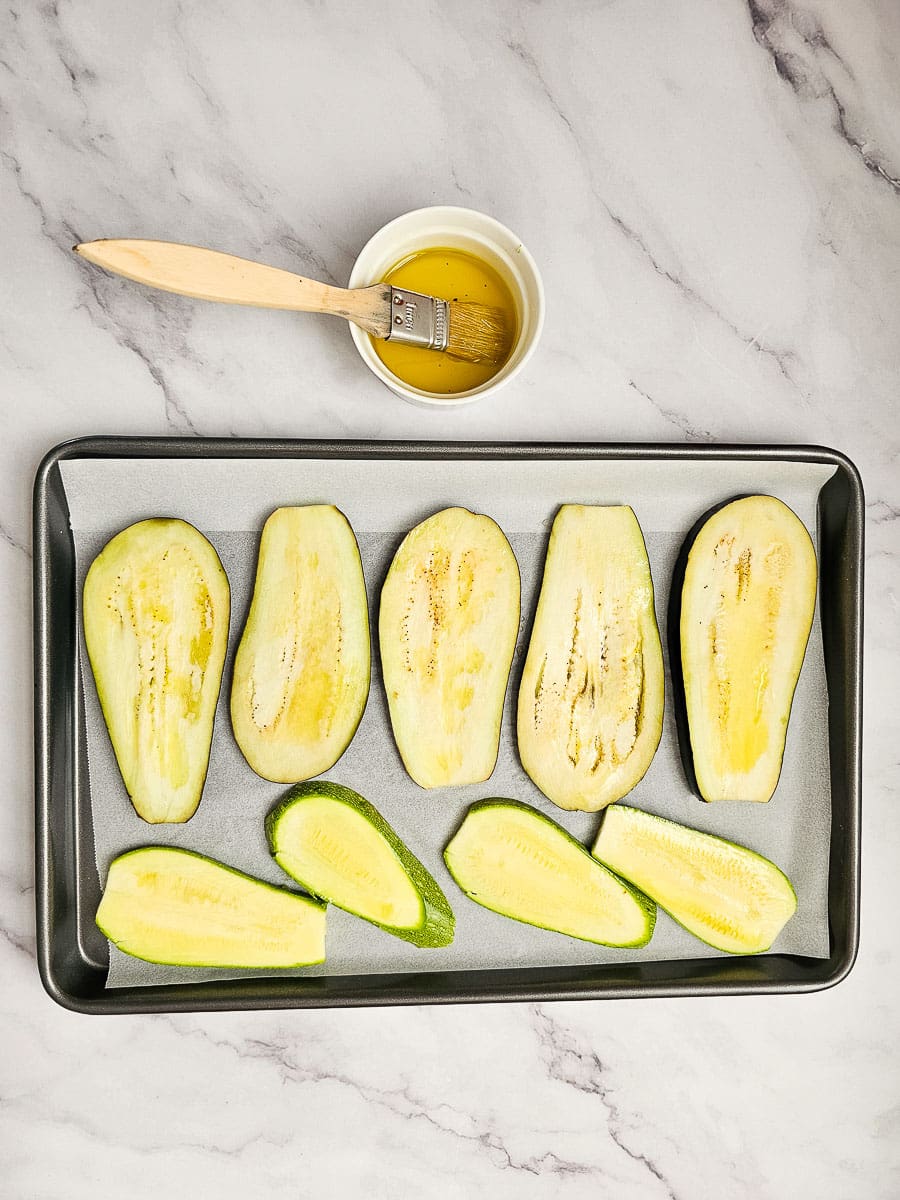
2. Slice zucchinis lengthways. Arrange sliced eggplant and zucchini in a single layer on baking tray. Lightly brush them with oil on both sides and sprinkle with salt and pepper.
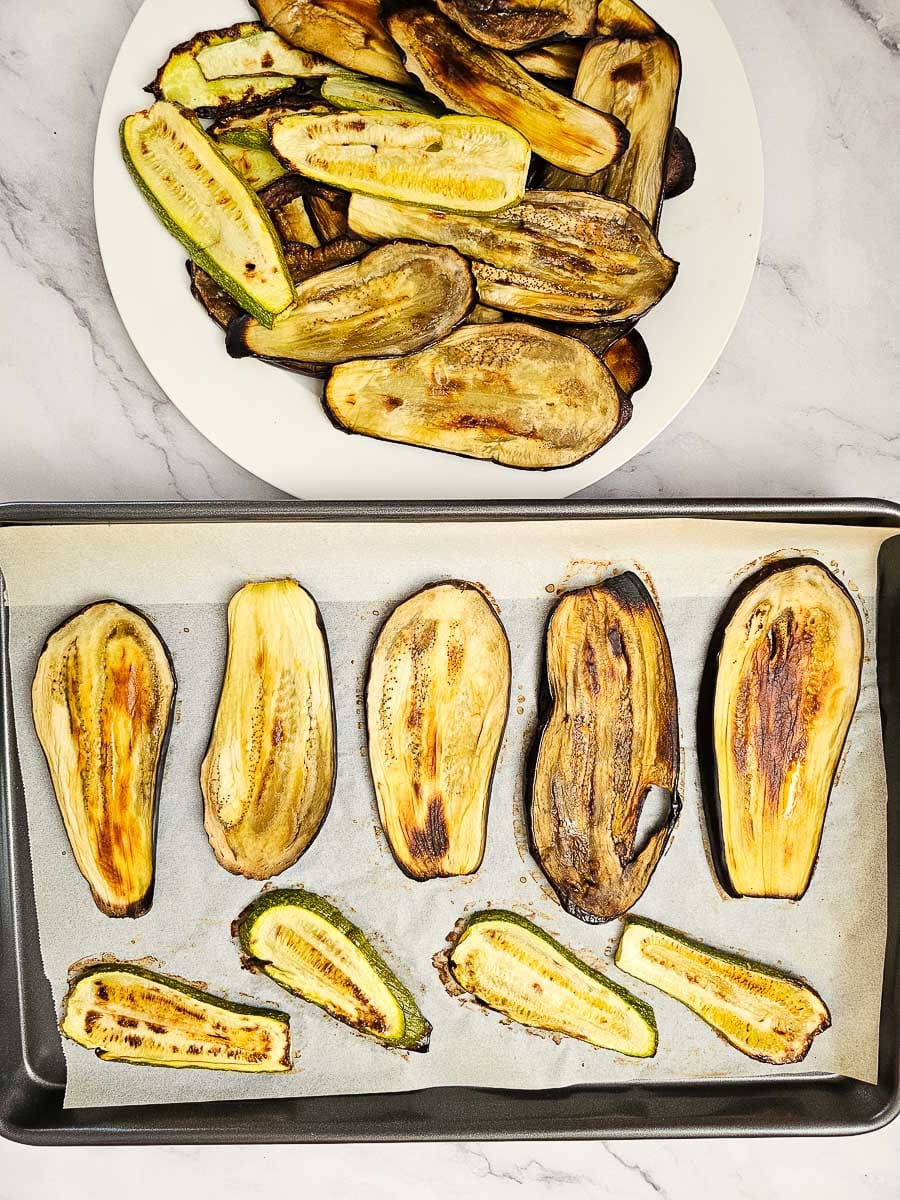
3. Bake eggplant and zucchini in oven for 15 minutes, then flip the slices over and continue baking for another 10-15 minutes or until lightly browned and eggplants are soft when pressed.
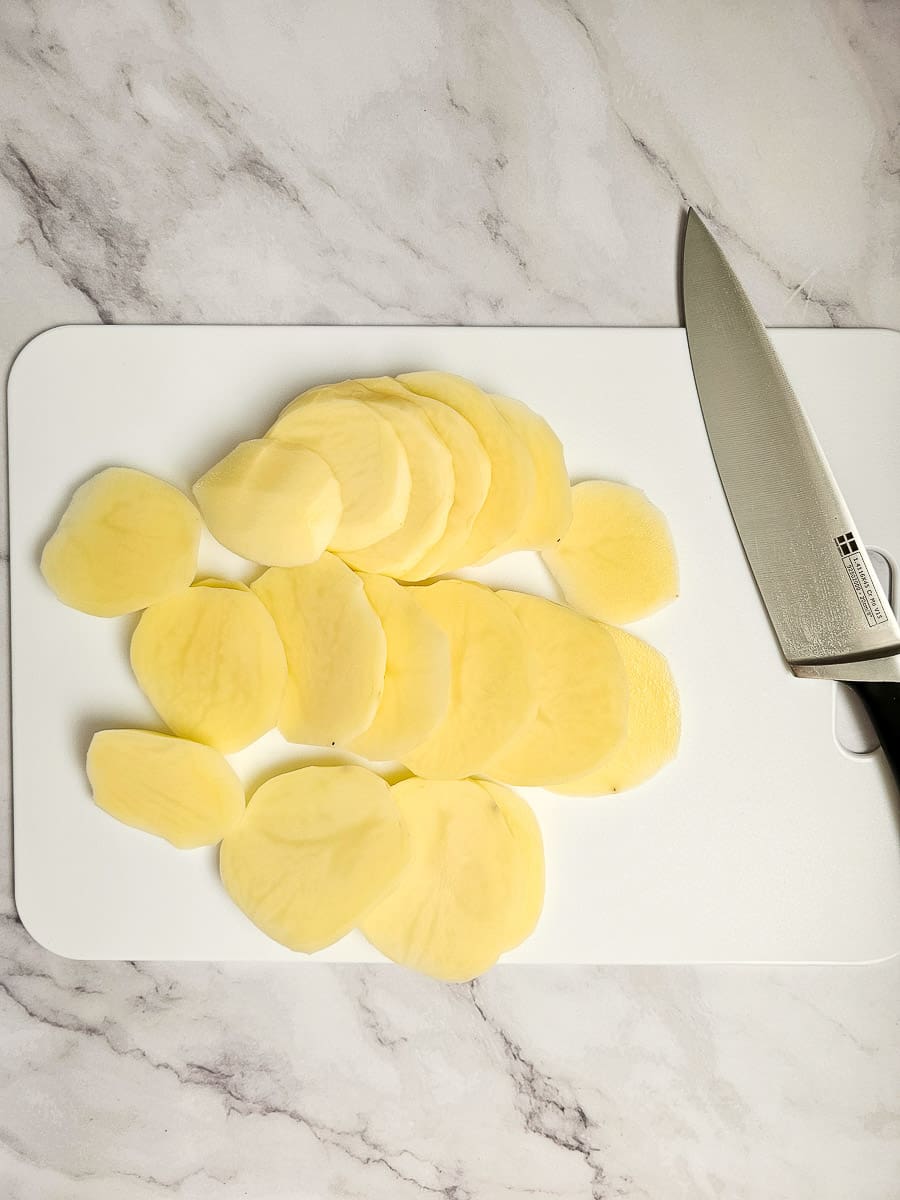
4. Meanwhile, peel and slice potatoes.

5. Heat oil in a large frying pan and fry until cooked through and potatoes are lightly golden on both sides.

6. Place on a plate lined with a paper towel.
Ingredients for the lentil sauce
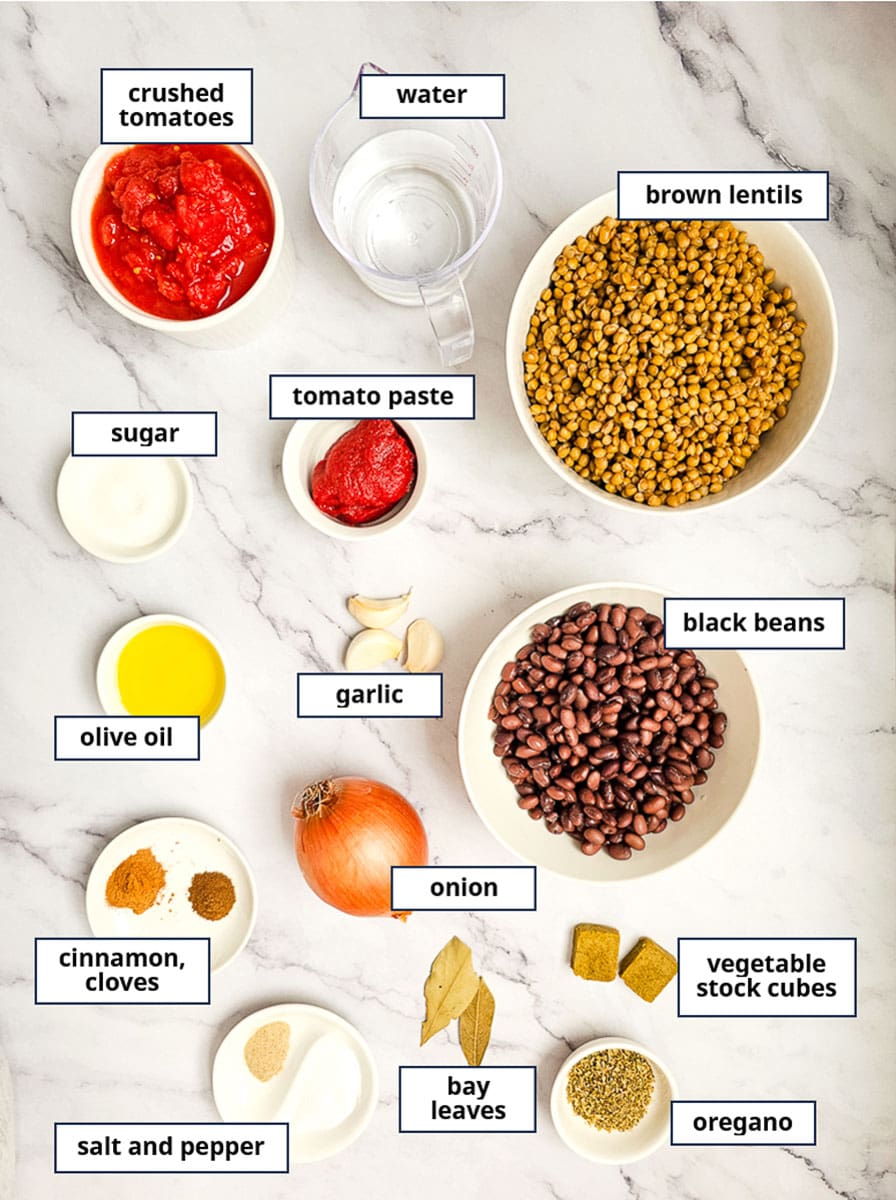
Lentils and black beans: These legumes serve as excellent substitutes for meat in Moussaka, offering a rich, meaty texture and hearty flavour profile that complements the other ingredients while providing a satisfying protein source.
Cinnamon and cloves: These spices give this Vegan Moussaka its authentic Mediterranean taste, closely resembling the traditional meat-based version.
How to make the lentil sauce
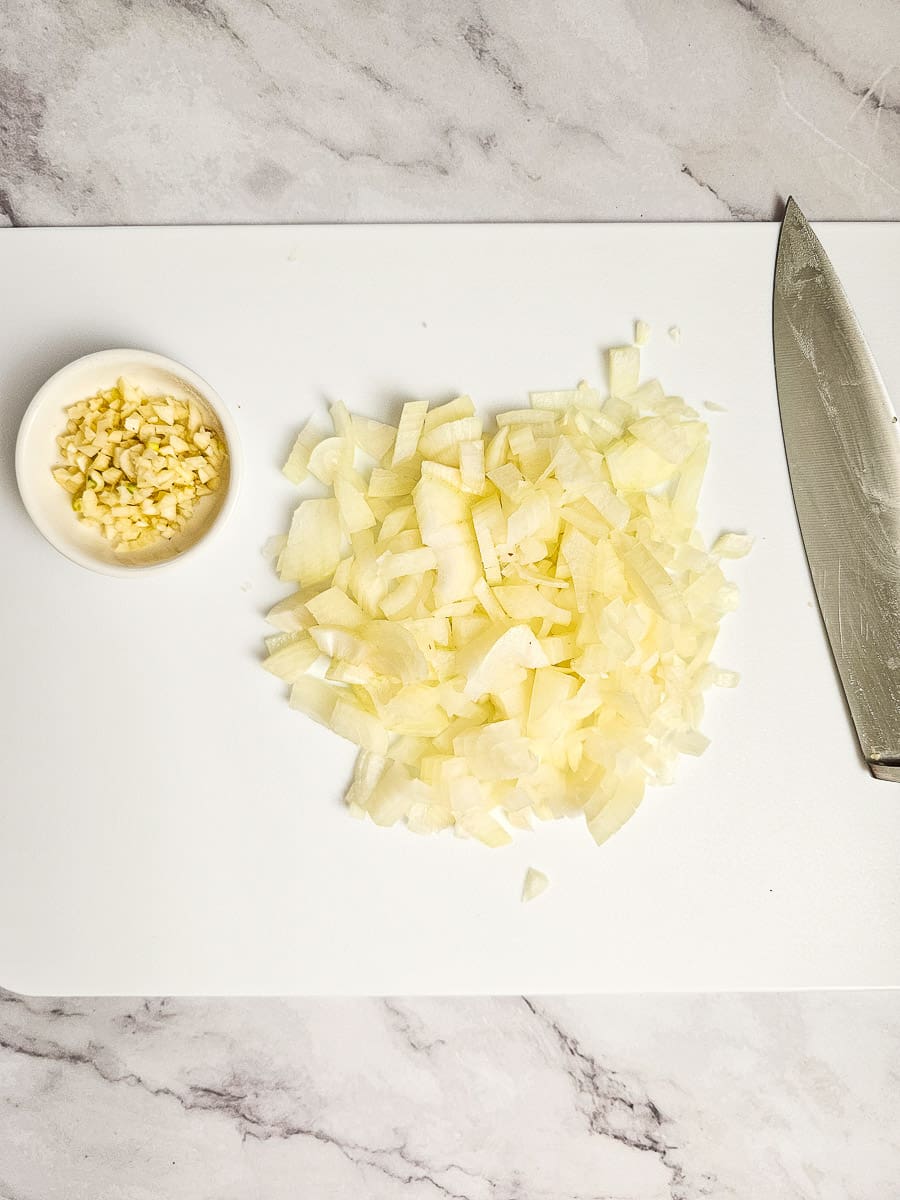
1. Dice onion and crush garlic.

2. Sauté onions for 4-5 minutes until the onions are soft and translucent. Add the garlic and cook for another minute.
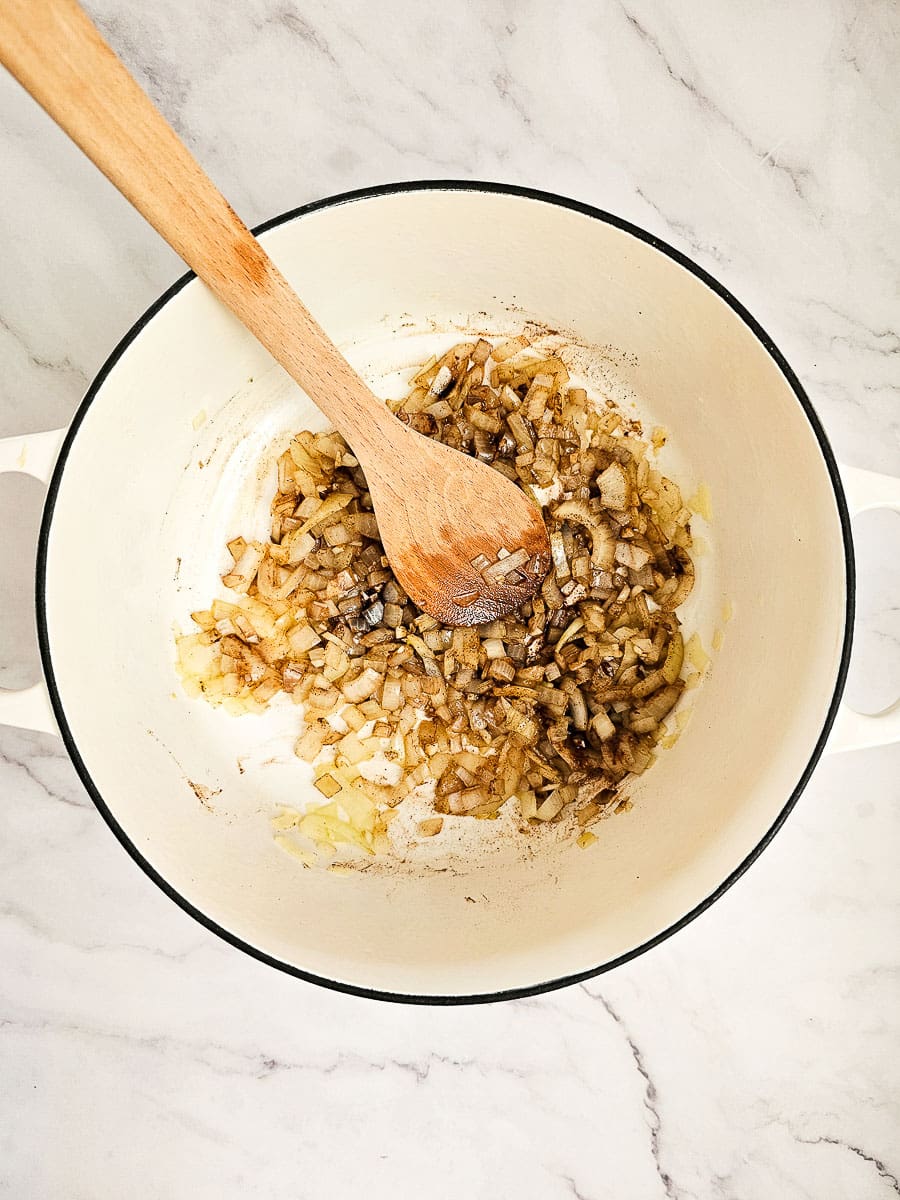
3. Add in the cinnamon and cloves and stir through for 1 minute.
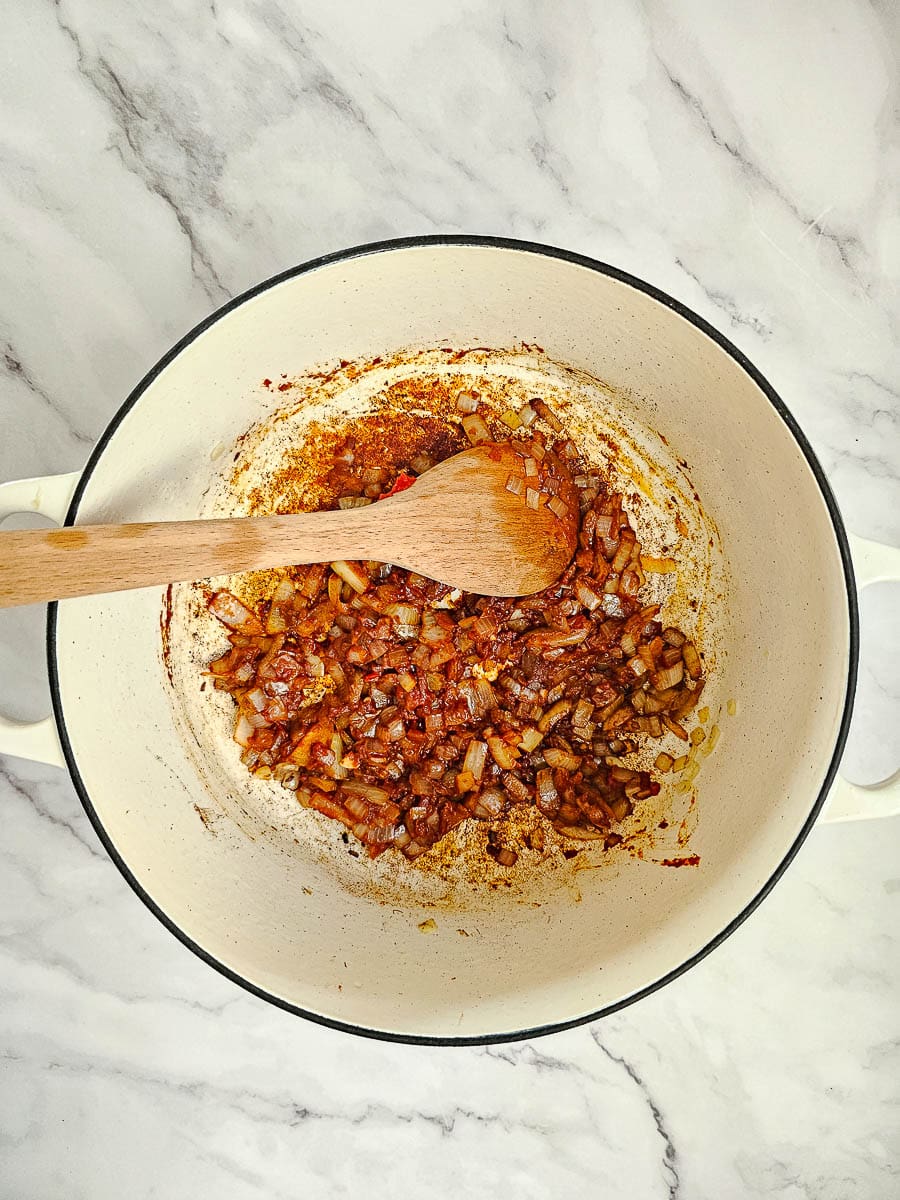
4. Add the tomato paste and cook for 1-2 minutes.
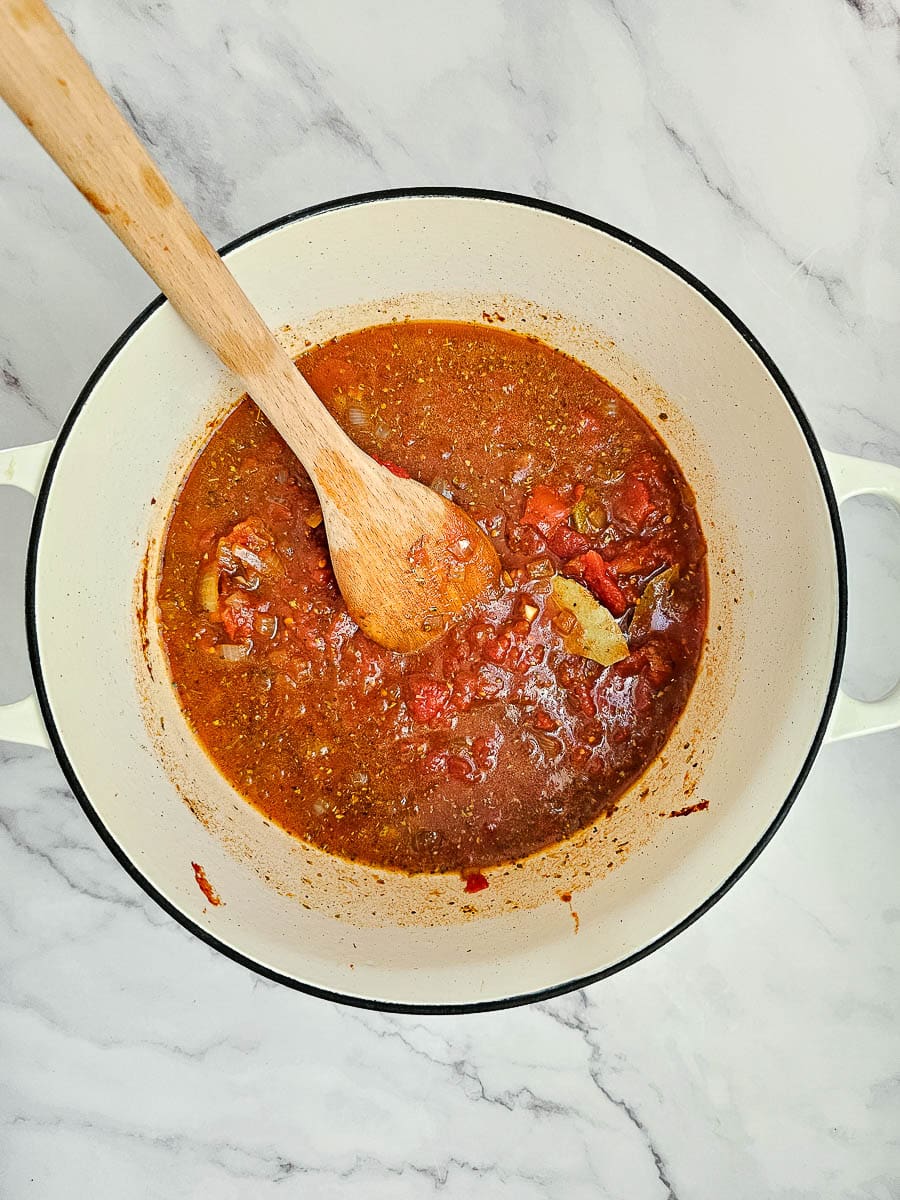
5. Add the crushed tomatoes, sugar, water, vegetable stock, oregano and bay leaves.
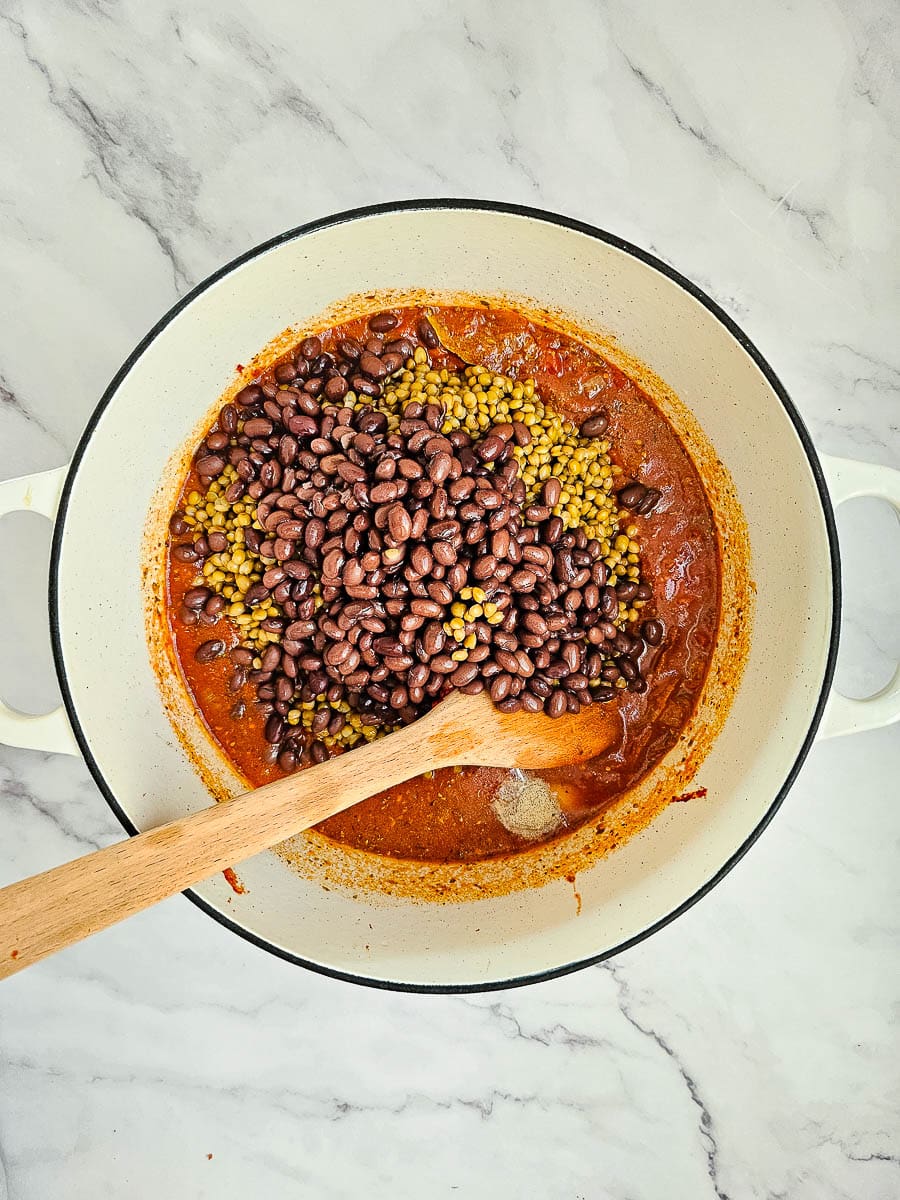
6. Stir in the lentils and black beans and season with salt and pepper.
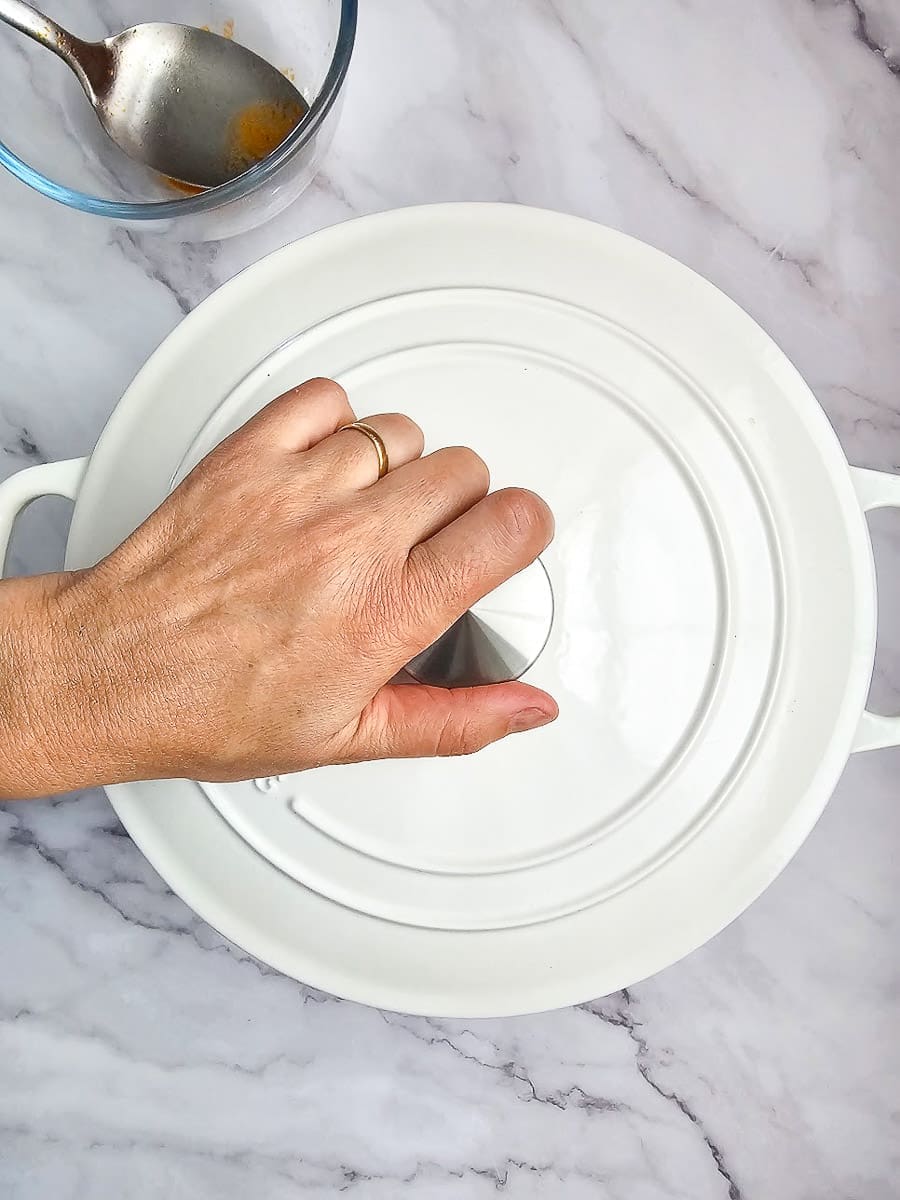
7. Bring to the boil. Reduce heat and simmer for 40 minutes, with lid on, until most of the juices have evaporated.
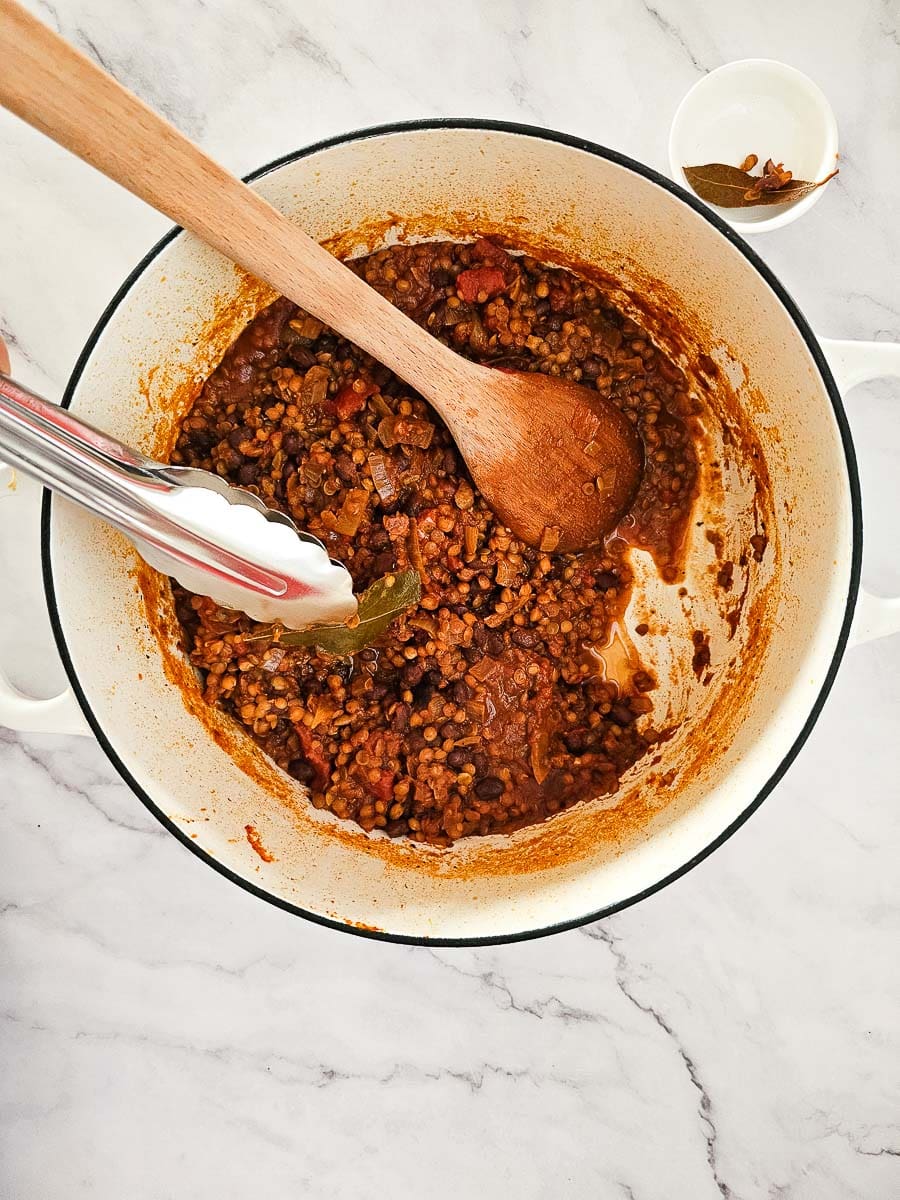
8. Remove bay leaves.
Ingredients for the vegan bechamel sauce
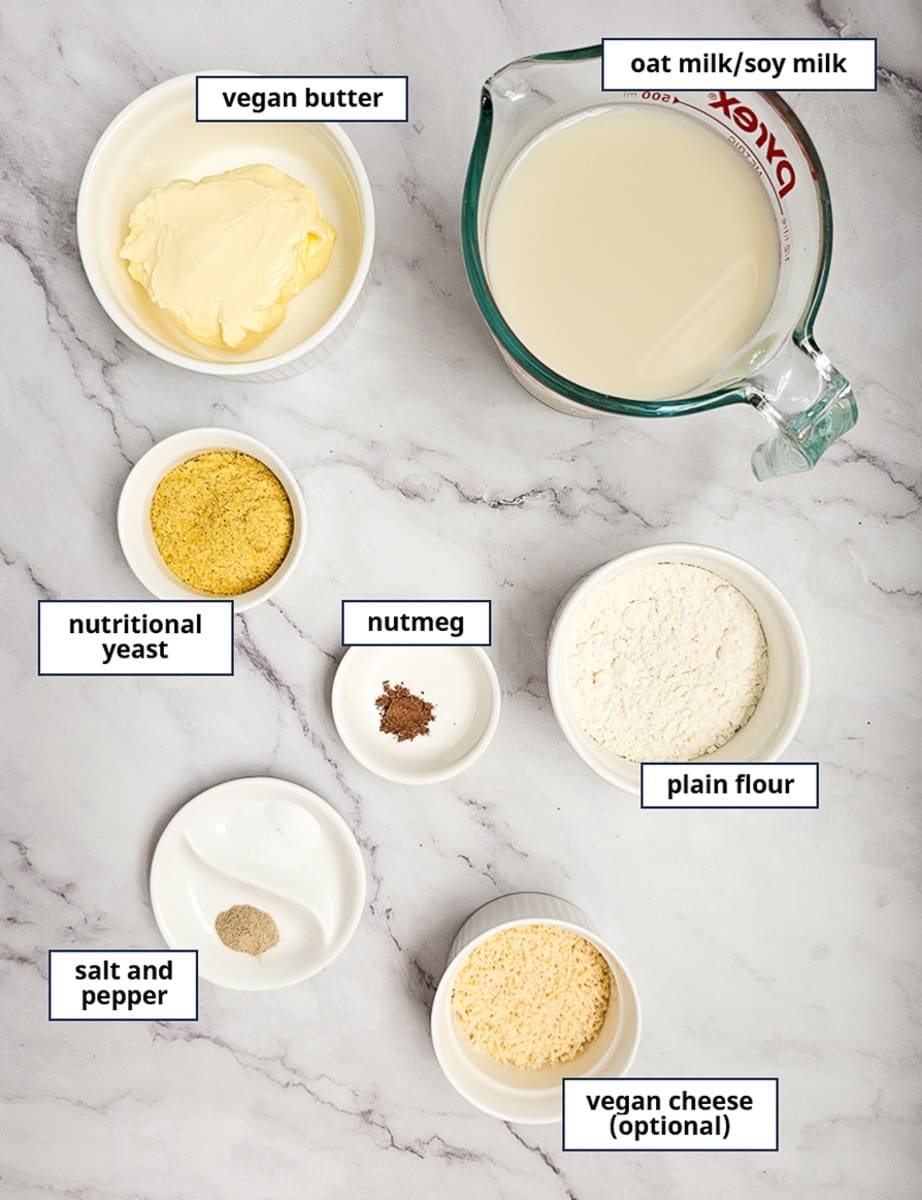
Oat or soy milk: Any plant-based milk can work in this recipe. I use whatever I have in the fridge. I usually use oat milk which has a subtle flavour and nice creamy texture. When warmed, soy milk develops a rich creaminess and tends to thicken quite well due to its high protein content. It also tastes more like a bechamel sauce. I have also made bechamel sauce with almond milk. Initially, the sauce may seem slightly runnier when poured on the moussaka and when it comes straight out of the oven, but the bechamel thickens as it cools.
Nutritional yeast: Provides a vegan source of B vitamins and adds a savoury, cheesy flavour to dishes, making it a versatile ingredient for enhancing nutrition and taste in cooking.
Vegan cheese: This is to sprinkle on top of your bechamel sauce before baking. However, you can use nutritional yeast if you prefer.
How to make the vegan bechamel sauce
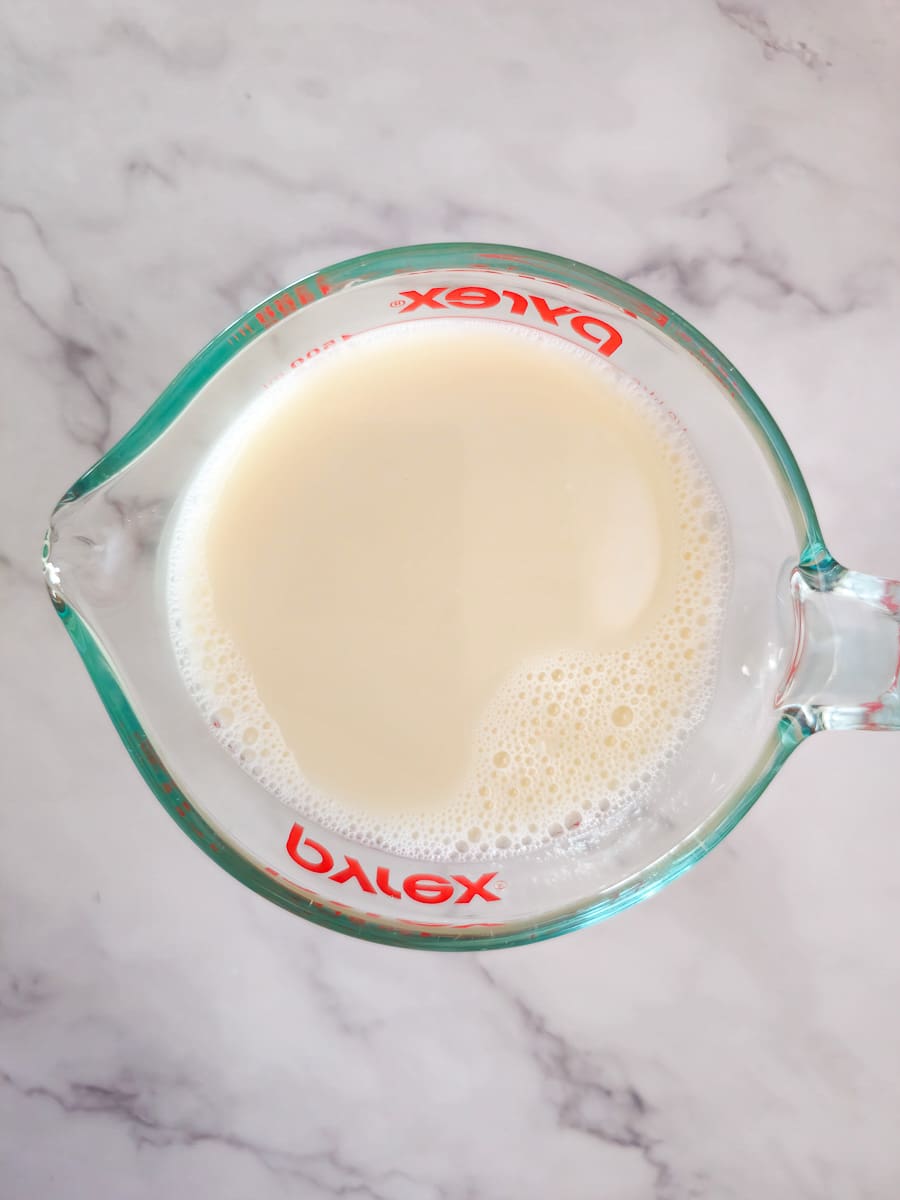
1. Warm milk in the microwave for 1 minute.
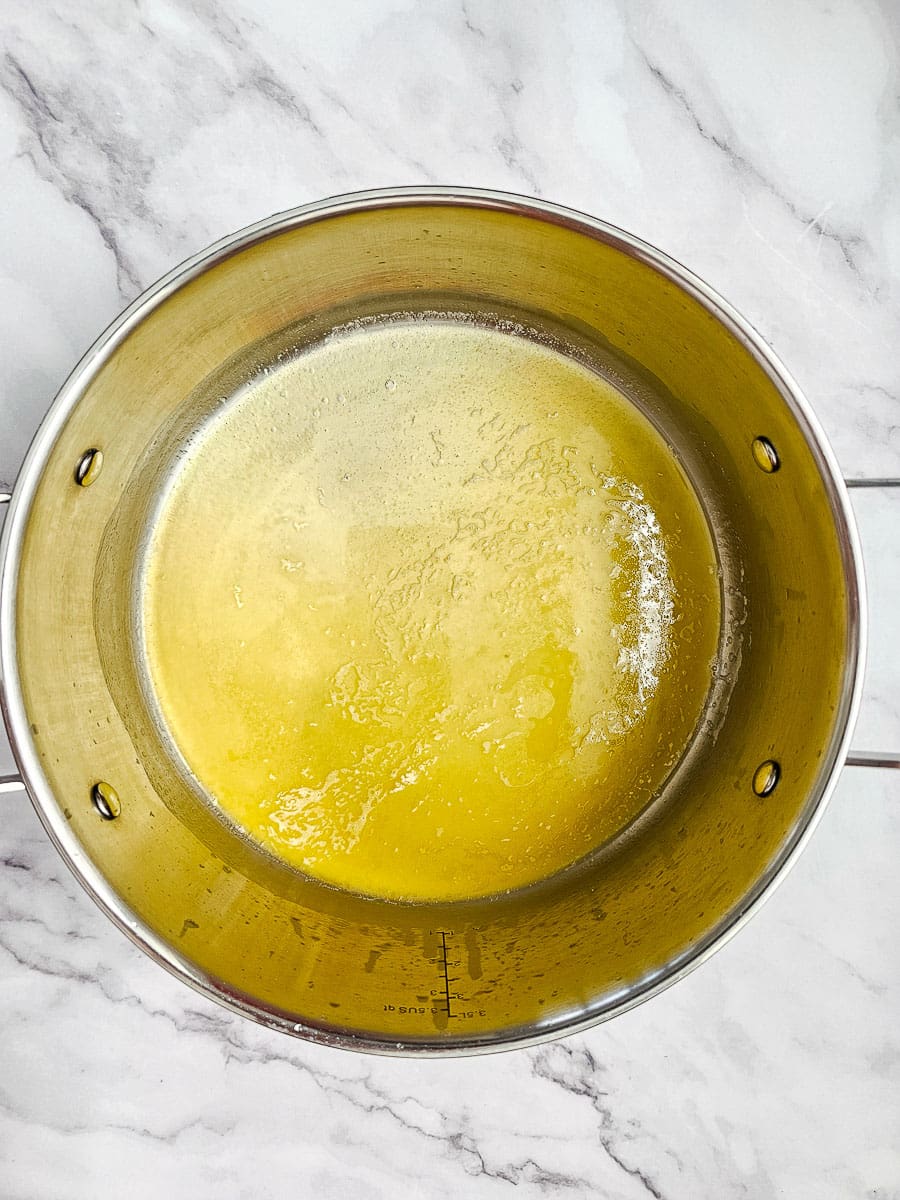
2. Melt the butter in a large saucepan over medium heat.

3. Add the flour, whisking continuously to make a paste. Stir for 1-2 minutes.

4. Gradually add warm milk, whisking continuously after each addition to prevent your sauce getting lumpy and sticking to the bottom of the saucepan.

5. Once all the milk has been added, continue whisking over medium heat until the mixture is thick and coats the back of a spoon.

6. When ready, remove from the stove and whisk in nutritional yeast flakes or vegan cheese, cinnamon, nutmeg, cheese, salt and pepper.
Assemble and bake
When assembling this Vegan Moussaka, there are 5 layers:
- Bottom layer: Potatoes.
- Second layer: Eggplant and Zucchini.
- Third layer: Lentil sauce.
- Fourth layer: Any leftover eggplant.
- Top layer: Bechamel sauce topped with grated cheese.
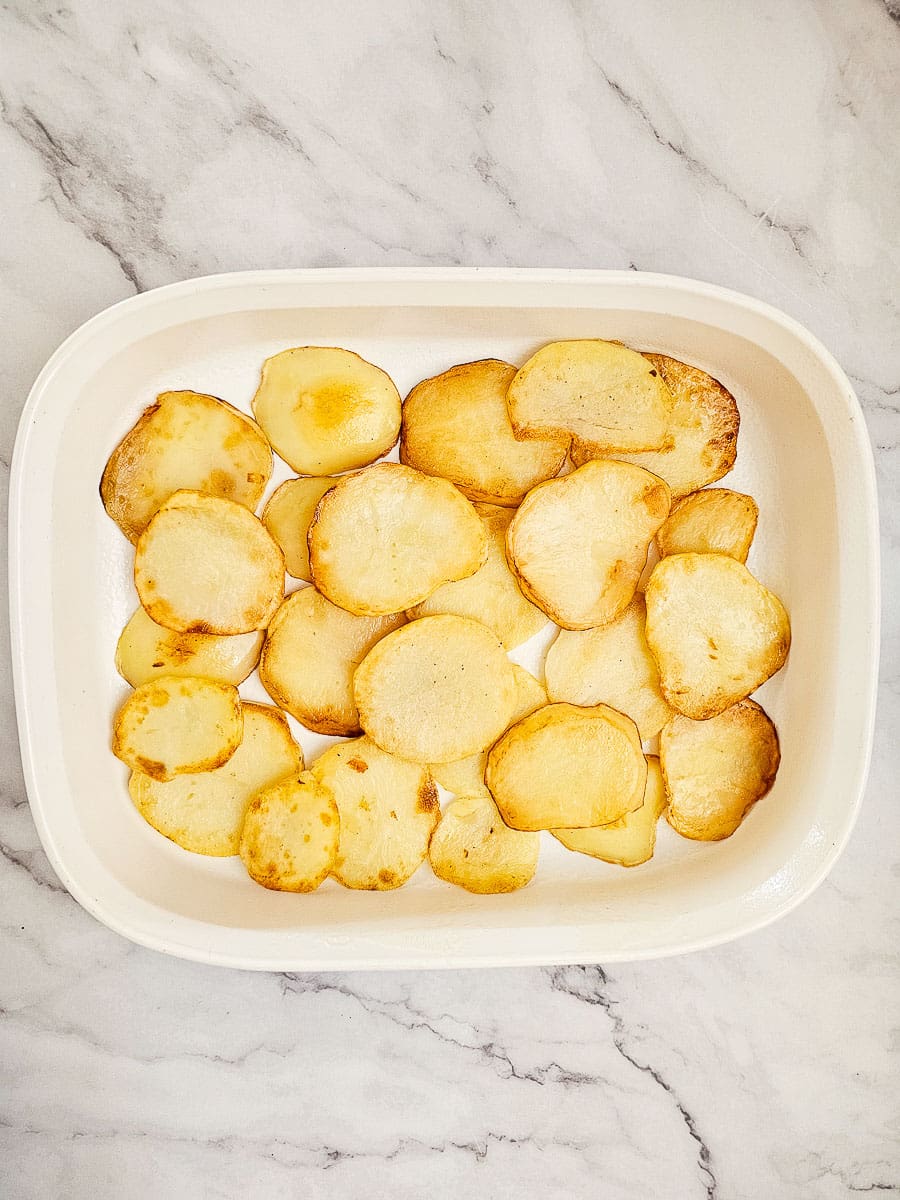
1. Lightly grease baking dish and arrange potatoes across the bottom of the dish.

2. Arrange sliced eggplants on top of potatoes, followed by the zucchini.
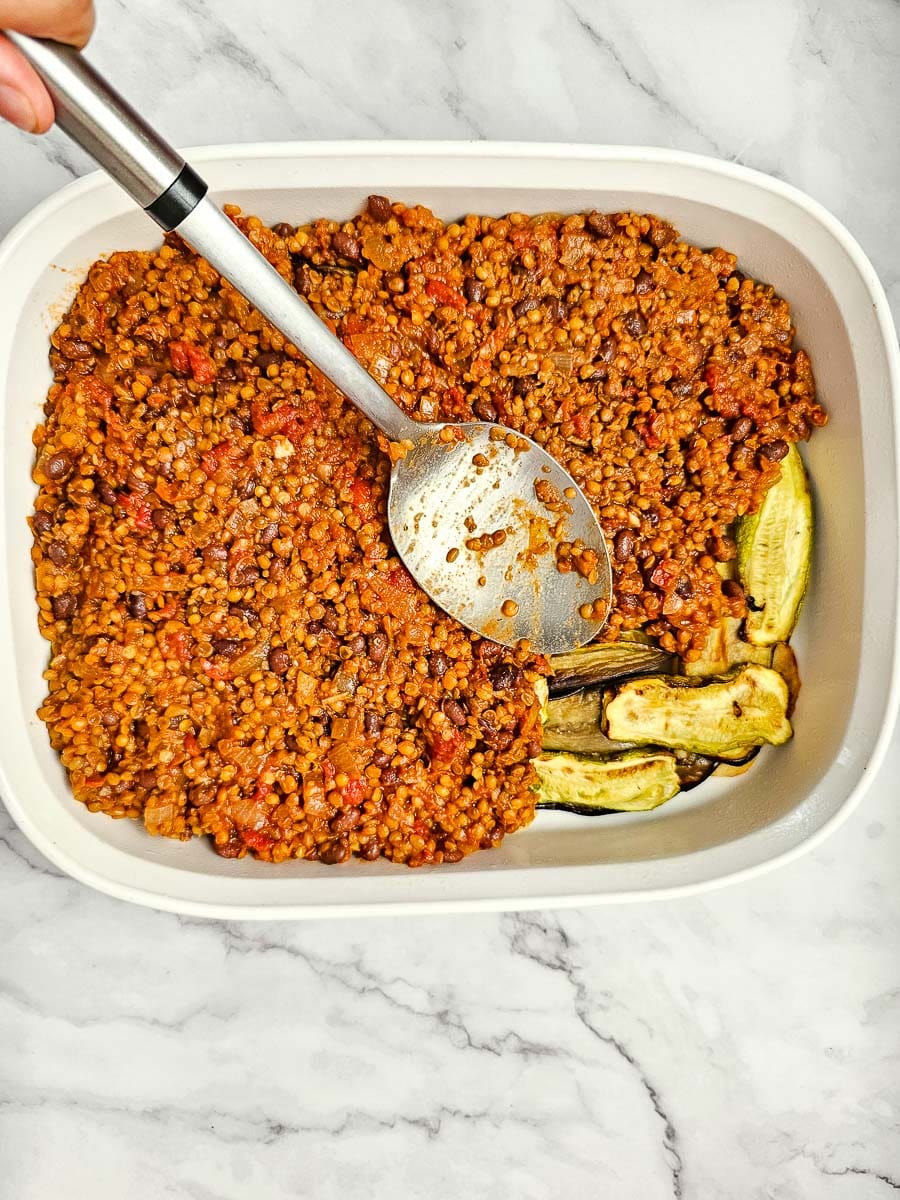
3. Spread lentil sauce over zucchini.
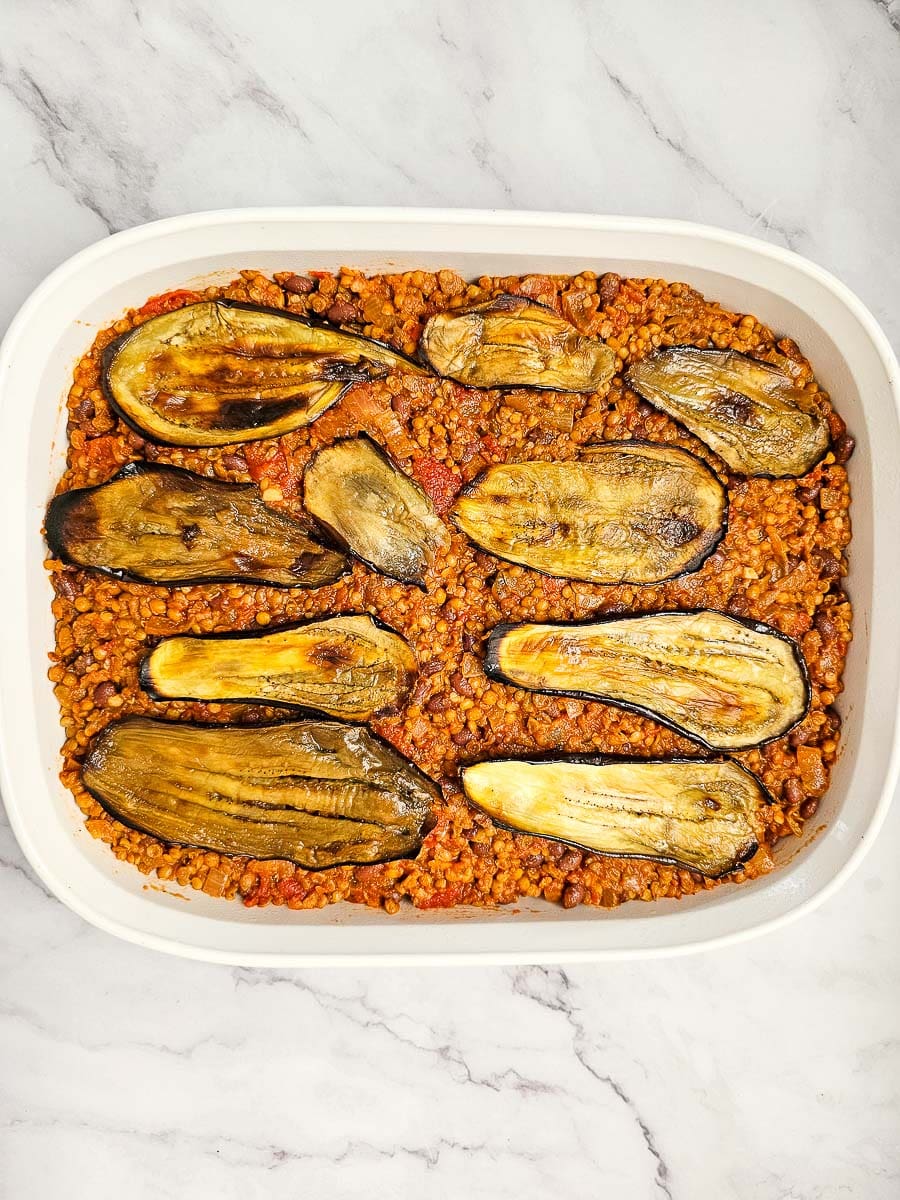
4. Top with any leftover eggplant.
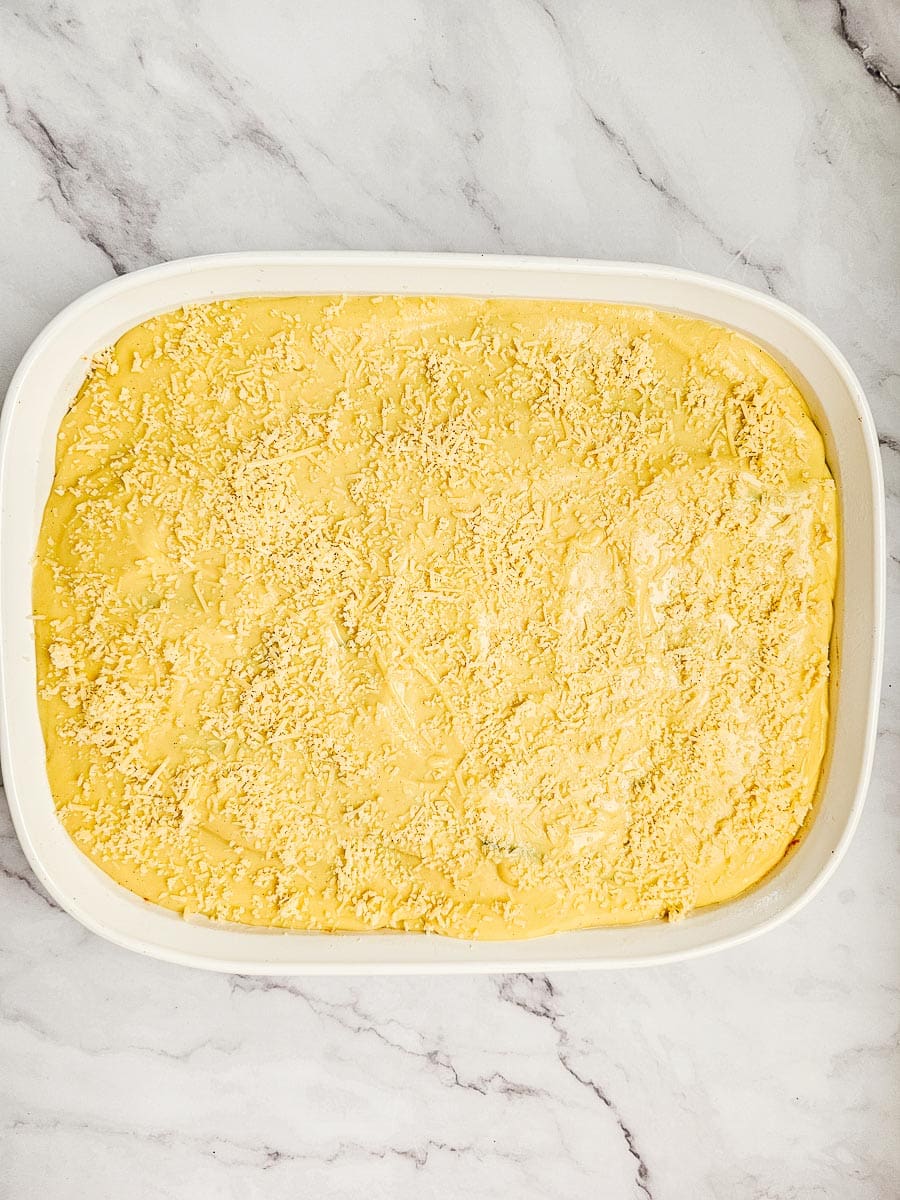
5. Pour bechamel sauce over the top and sprinkle with nutritional yeast or grated vegan cheese.
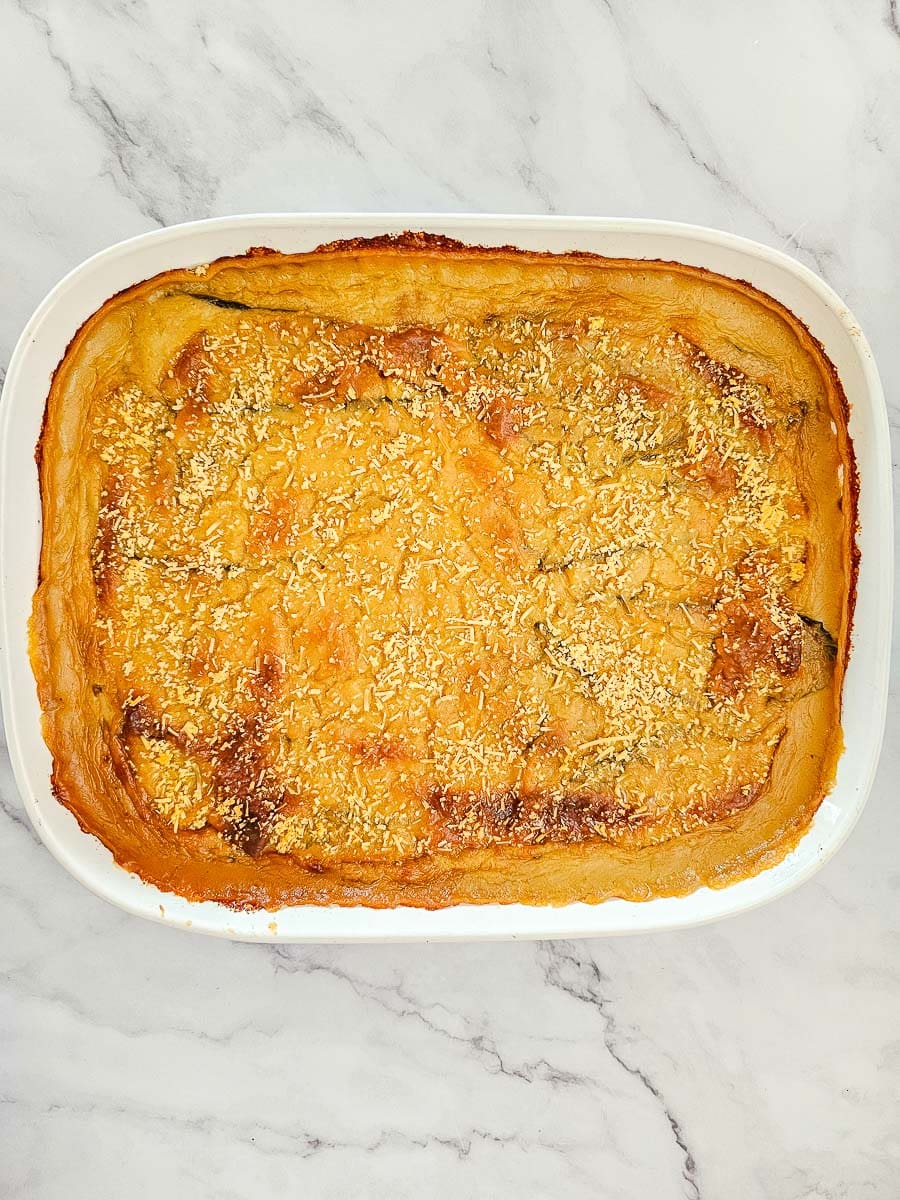
6. Bake moussaka in a moderate oven at 180° C / 350° F for approximately 45-50 minutes or until golden.

Serve with a Greek Salad.
Health Benefits of Vegan Moussaka
Vegan Moussaka boasts numerous health benefits through its wholesome ingredients.
- Eggplants are a good source of vitamins, minerals and antioxidants, including vitamins C and K, potassium and phenolic compounds, which contribute to overall health. Eggplants are a also a rich source of dietary fibre, promoting digestive health, aiding in weight management, and supporting heart health.
- Lentils are an excellent source of plant-based protein, making them an essential component of vegetarian and vegan diets and aiding in muscle repair and growth. Lentils are also packed with dietary fibre, promoting digestive health and supporting a healthy gut microbiome. They are also rich in essential vitamins and minerals such as iron, folate, potassium and manganese, contributing to overall well-being and supporting vital bodily functions.
- Potatoes contribute essential nutrients like potassium and vitamin C.
- Zucchinis are a good source of vitamins A and C and help to regulate blood sugar levels.
- Tomatoes are packed with lycopene, promoting heart health and reducing inflammation.
- Olive oil offers heart-healthy monounsaturated fats and anti-inflammatory properties.
- Oat milk is rich in fibre and contains essential nutrients like vitamin B12 and iron, and promotes heart health. On the other hand, soy milk enriches the dish with calcium and vitamin D, supporting bone health.
- Nutritional yeast is a vegan source of B vitamins, enhancing energy metabolism and supporting immune function.
Tips for making Vegan Moussaka
Do you need to salt your eggplant?
I always salt my eggplant regardless of how fresh they are or how many seeds they have. While eggplants are produced to be less bitter these days, bitterness can still occur now and again. Salting eggplants can help to remove any potential bitterness in the eggplant. It also helps to draw out any excess moisture from the eggplant, which can prevent it from becoming soggy when grilled or fried.
To salt eggplant, place your eggplant in a colander and sprinkle generously with salt. Let them sweat for about 30 minutes. Rinse and pat dry with a clean tea-towel.
Sautéing the spices first
Sautéing cinnamon, cloves and tomato paste in the oil before adding the crushed tomato and water allows their flavours to develop fully, enhancing the overall aroma and taste of the dish while ensuring even distribution.
Make the day before
As there are a few steps to this recipe, you can prepare the vegetables and lentil sauce the day before. Then, on the day, you just need to make the bechamel sauce and bake. While it’s baking in the oven, I make a nice Greek Salad to serve the dish with. Alternatively, you can make and assemble everything in a baking dish (up to Step 7 in the ‘Assemble and Bake’ section below). Cover tightly and refrigerate.
Leftovers
This recipe makes enough portions for two dinners, accommodating a family of four. If you enjoy having leftovers, this means you can take a break from cooking for one evening.
Storage
Keep in fridge for 4-5 days or freeze for up to 3 months. When ready to reheat, thaw in fridge overnight and then warm in moderate oven until heated through.

